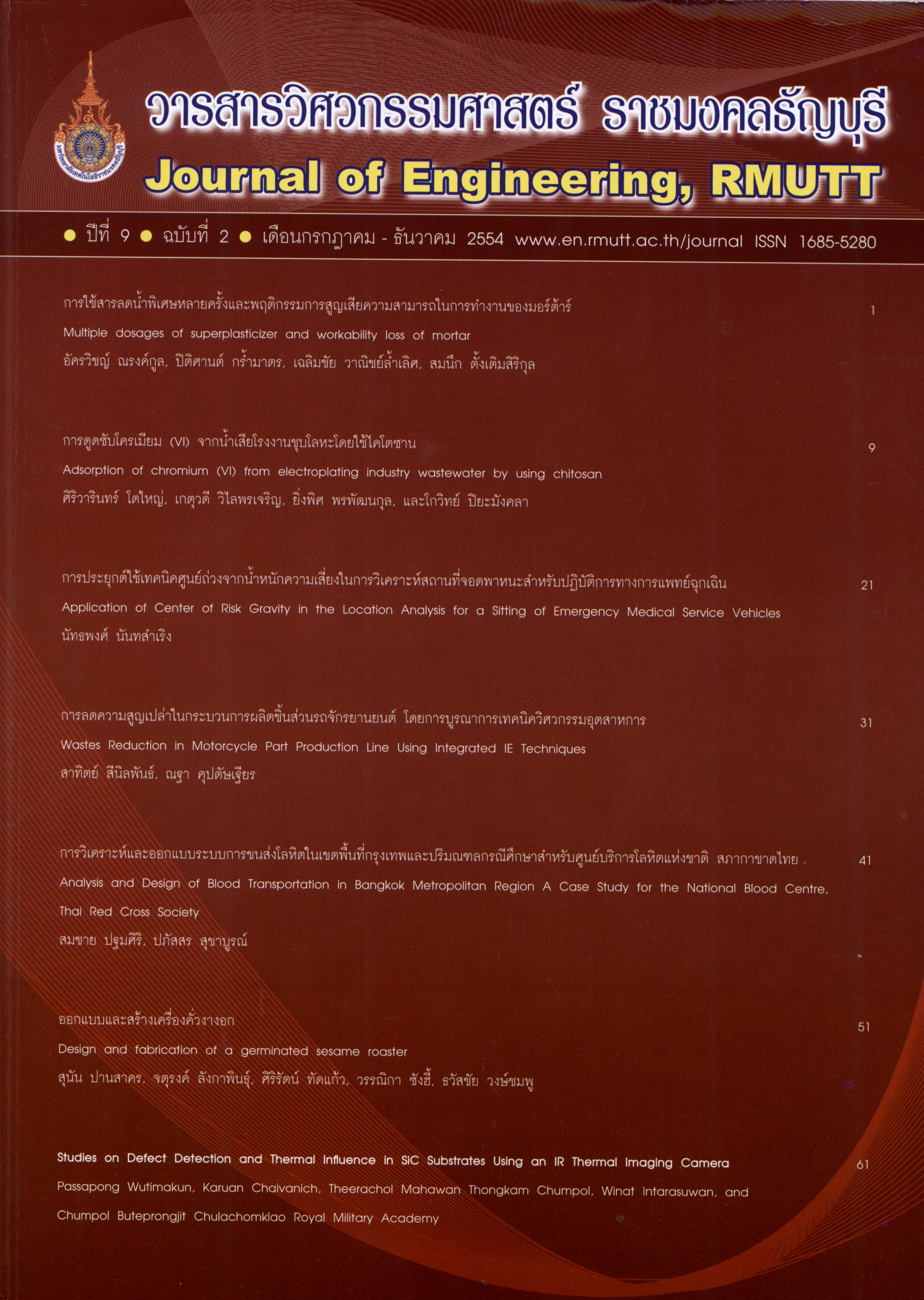Analysis and Design of Blood Transportation in Bangkok Metropolitan Region A Case Study for the National Blood Center, Thai Red Cross Society
Main Article Content
Abstract
Everyday, the demand for blood is enormous in order to save lives. Quick and safe blood service is crucial for the efficiency of medical treatment. However, distribution cost of blood should be of important as well. In Bangkok Metropolitan Region, the individual hospital needs to send its vehicle to pick up the requested blood at the National Blood Center (NBC), Thai Red Cross Society. On average, there are approximately 74 hospitals sent various kinds of vehicles to wait and pick up blood between I - 300 units from the NBC. With the current individual pick-up system, the transportation cost is excessive due to too many empty trips. This research paper presents the results from the study and analysis of the current blood transportation system. The new design is proposed based on the management science and business logistics concept. The problem is modeled as the vehicle routing problem (VRP) and solved by the Clarke and Wright's heuristic method. By testing with the real data, the results show that a lot of trips and total distance can be saved. Potentially, the transport efficiency could be increased by 68.53%. The paper also discusses about the business model for implementing such concept at the NBC.
Article Details
The manuscript, information, content, picture and so forth which were published on Frontiers in engineering innovation research has been a copyright of this journal only. There is not allow anyone or any organize to duplicate all content or some document for unethical publication.
References
พรชนก โพธิ์บัณฑิตย์, สมชาย ปฐมศิริ, 2554. การวิเคราะห์รูปแบบและต้นทุนการกระจายโลหิต
ในประเทศไทย. การประชุมวิชาการข่ายงานวิศวกรรมอุตสาหการแห่งชาติ 2010. 16 - 17 ธันวาคม 2553.
ปภัสสร สุขาบูรณ์, สมชาข ปฐมศิริ, 2554. ประเด็นปัญหาและแนวคิดในการปรับปรุงประสิทธิภาพ
การกระงายโลหิตในพื้นที่กรุงเทพมหานครและปริมณฑล กรณีศึกษาของศูนย์บริการโลหิตแห่งชาติ สภากาชาดไทย. การประชุมวิชาการข่ายงานวิศวกรรมอุตสาหการแห่งชาติ 2010.16- 17 ธันวาคม 2553.
Rytila, J.S,, Spens, K.M., 2006. Using simulation to increase efficiency in blood supply chain.Management Research News, 29 (12): 801-819.
Sime S.L., 200S. Strengthening the service continuum between transfusion providers and
suppliers: enhancing the blood services network.Transfusion, 45 (October): 206 - 223.
Koch, O., Weigl, H., 2003. Modeling ambulance service of the Austrian Red. Proceeding of the 2003 Winter Simulation. [online] Available:http://www.informs-sim.org/ wsc03papers/217
.pdf(1 December 2011).
Katsaliaki K., 2008. Cost-effective practices in the blood service sector. Health Policy, 86: 276-287.
Bosnes V., Aldrin M., Heier H.E., 2005. Predicting blood donor arrival. Transfusion, 45 (February):162 - 170.
Nuchprayoon, C., 2010. National Blood Centre: Dream and reality, National Annual Scientific Conference on Transfusion Medicine,(March):1-9.
Laporte G., Gendreau M., Potvin J,, Semet F,,2000 Classical and modern heuristics for the vehicle routing problem. International Transactions in Operational Research, 7:285 - 300.
Clarke, G., and J. W. Wright (1964). Scheduling of vehicles from a central depot to a number of delivery points. Operations Research 4 (12):568-581.


